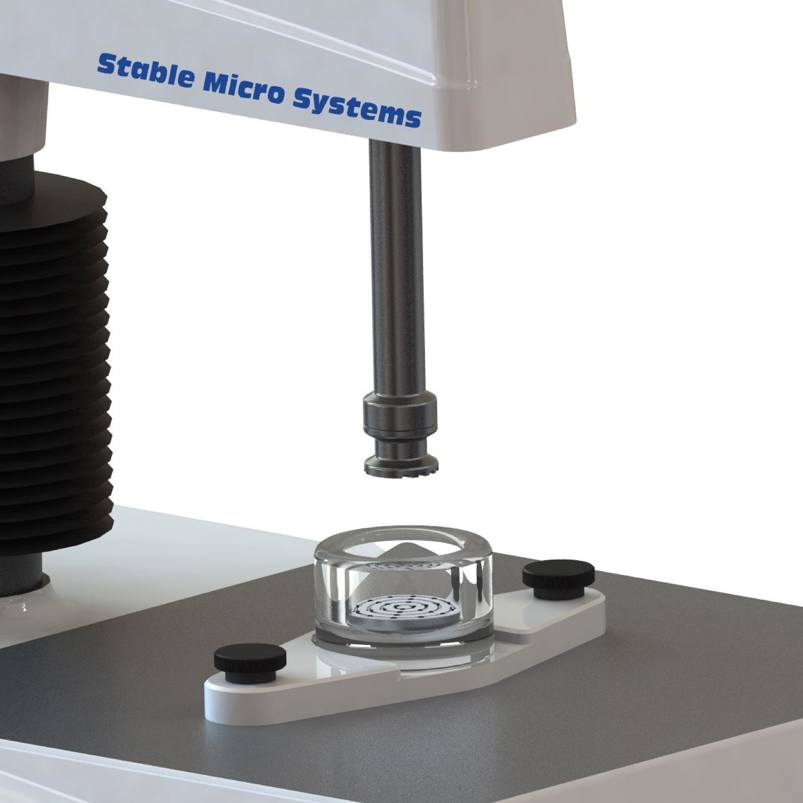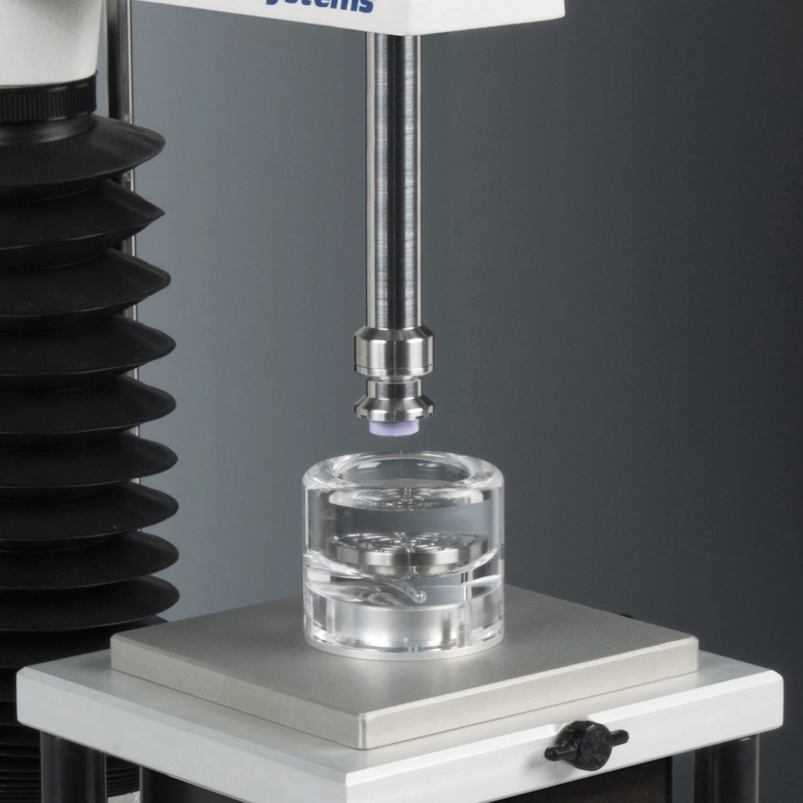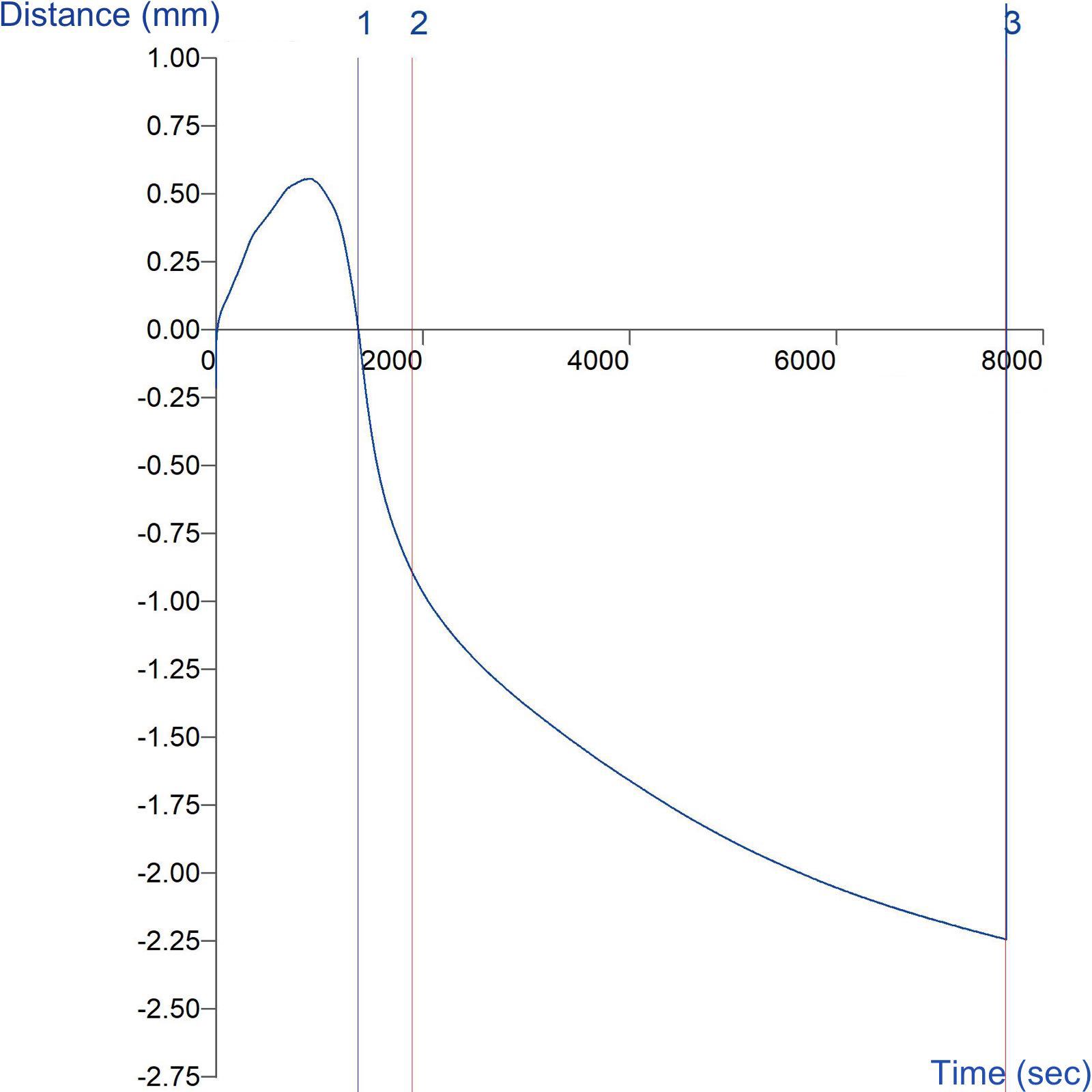Product overview
The rising popularity of fast dissolving dosage forms (FMTs) can be attributed to convenience and the ease of drug administration they offer. Although particularly applicable to the paediatric and geriatric markets, FMTs are suitable for consumers of all ages. A thorough analysis of disintegration behaviour is vital for the formulation of new FMTs to ensure reliable and consistent drug release. The tablet or wafer has to be resilient enough to endure manufacturing and shipping yet friable enough to release a sufficient amount of disintegrants to deliver an optimum dissolution rate once they are placed in the mouth or ingested.
The Tablet Disintegration Rig facilitates the reliable assessment of the mechanical properties of fast-melting tablets. The rig closely replicates the in vivo conditions of the human mouth, enabling manufacturers to examine water absorption and the disintegration of associated particles into individual components. This allows the determination of tablet disintegration time and behaviour, giving a valuable insight into performance and efficacy.
The unique geometry of the rig allows the disintegration medium to access the tablet from all areas. The dry tablet sample is secured to the underside of the probe by a thin strip of double sided adhesive tape along its diameter. The probe's surface has a 'channelled' design, allowing fluid to flow freely all round the tablet while ensuring contact is maintained with the probe. Once the probe is lowered into the fixed quantity of medium, the tablet is positioned on a perforated platform, and the Texture Analyser applies a constant moderate force onto it. The perforated surface enables free ingress of water beneath the sample and dispersion of the disintegrant. During the test the distance as the tablet disintegrates while submerged is measured. The probe distance is unchanging as the tablets remain cohesive. However, once the tablets disintegrate the compression distances increase dramatically. Among the measurements which can be obtained from such graphs are e.g. time when the disintegration started, how rapidly it disintegrated, time to fully disintegrate, etc.
The Tablet Disintegration Rig is a more efficient alternative to the older means of assessing dissolution properties traditionally employed by researchers. They involved submerging a tablet attached with tape to the bottom of a cylinder probe and testing the time required for the tablet to dissolve. But the tablet was 'trapped' between the tape and the vessel base, restricting its exposure to the medium. This attachment overcomes the issue by allowing the FMT particles to detach easily during the disintegration process, imitating the realistic conditions of drug administration.
The rig is supplied with five probe heads to enable multiple sample preparation in advance of testing and fast interchange.
How does the Tablet Disintegration Rig work?
Ideal sample form
Solid materials which disintegrate when brought into contact with liquid.
Benefits and limitations
- Overcomes the issue by allowing the FMT particles to detach easily during the disintegration process, imitating the realistic conditions of drug administration.
- Small sample and vessel size.
Technical information
Installation
Full installation instructions are provided within the Education Zone of the latest Exponent/Connect software version and on the technical information sheet accompanying this product.
Chemical compatibility
Stable Micro Systems probes and attachments are commonly made from four materials: anodised aluminium (AA6082 T6), stainless steel (316 T), Delrin (acetyl copolymer) and Perspex (polycarbonate).
In general use, probes and attachments made from these materials will be suitable for testing food products and inert non-food materials.
The four materials listed above are not universally resistant to all types of chemicals and as such the compatibility of the probe/attachment material with the product (to be tested) must be established to prevent damage to the probes and attachments. If the compatibility of the product with the probe is unknown to the customer then the chemical information about the product (Material Safety Data Sheet or Product Data Sheet) should be submitted to Stable Micro Systems. Stable Micro Systems will then assess the suitability of the probe/attachment material for use with the product and advise accordingly. If this advice is not sought then Stable Micro Systems will not accept liability for probes/attachments damaged by chemical attack from the product being tested.
Cleaning and maintenance
All probes and attachments may be cleaned in warm (or hand hot) water using a mild detergent. A soft brush may be used but abrasive cleaning aids should be avoided. Stable Micro Systems products should not be microwaved or cleaned in a dishwasher.
Screw threads should be lightly lubricated after drying using a light lubricant, e.g. petroleum jelly, mineral oil. This will aid the fitting and unscrewing of the item. Each component of a probe or attachment should be wrapped separately when stored, to avoid scratching or chipping. This will safeguard against any unnecessary damage to the accessory.



